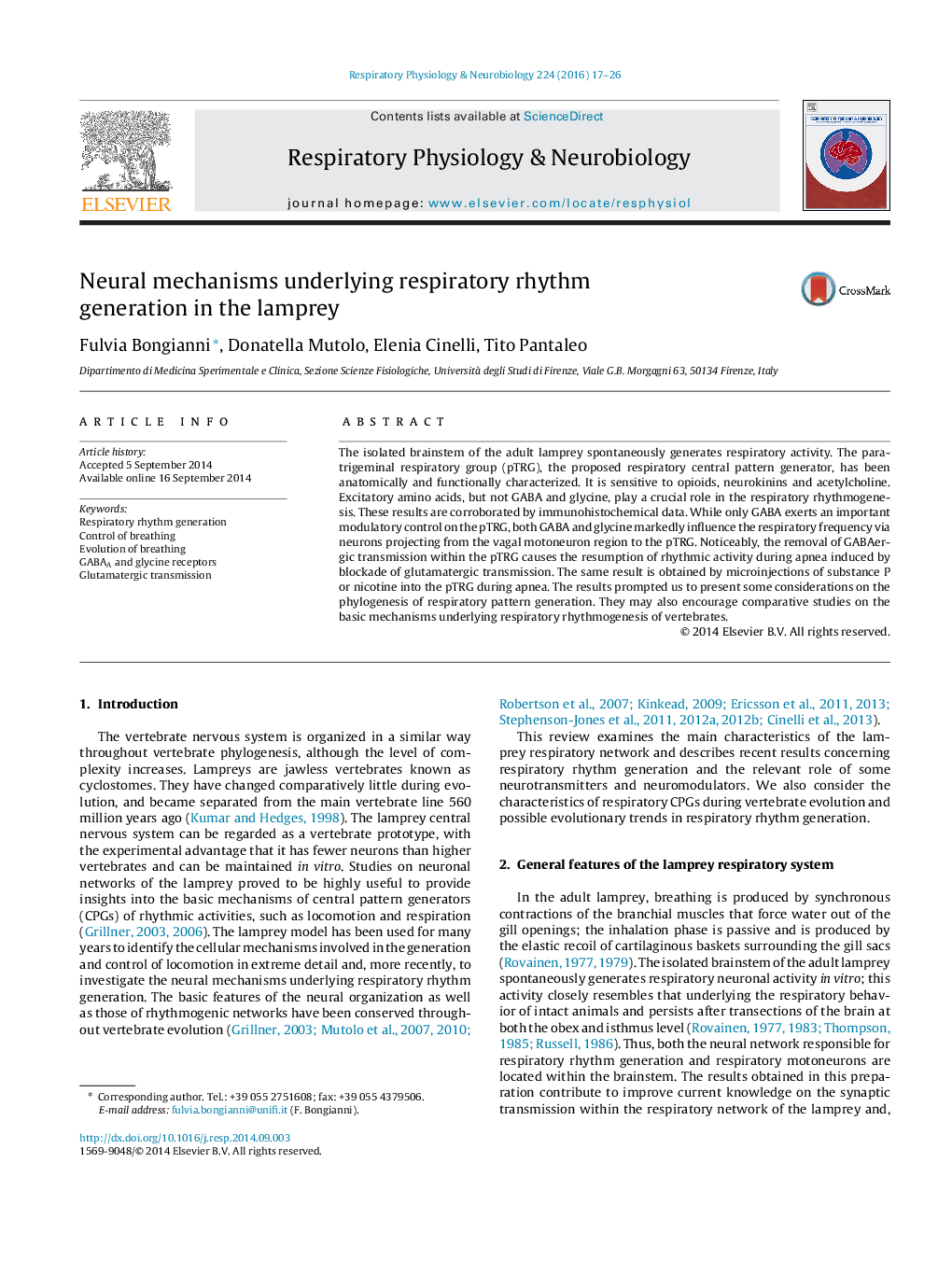| کد مقاله | کد نشریه | سال انتشار | مقاله انگلیسی | نسخه تمام متن |
|---|---|---|---|---|
| 2846767 | 1571306 | 2016 | 10 صفحه PDF | دانلود رایگان |
• The paratrigeminal respiratory group (pTRG) is the respiratory CPG in the lamprey.
• An anatomical and functional characterization of the pTRG has been provided.
• Excitatory amino acids play a crucial role in the respiratory rhythm generation.
• GABA and glycine exert potent influences on respiratory activity.
• We consider the characteristics of respiratory CPGs during vertebrate evolution.
The isolated brainstem of the adult lamprey spontaneously generates respiratory activity. The paratrigeminal respiratory group (pTRG), the proposed respiratory central pattern generator, has been anatomically and functionally characterized. It is sensitive to opioids, neurokinins and acetylcholine. Excitatory amino acids, but not GABA and glycine, play a crucial role in the respiratory rhythmogenesis. These results are corroborated by immunohistochemical data. While only GABA exerts an important modulatory control on the pTRG, both GABA and glycine markedly influence the respiratory frequency via neurons projecting from the vagal motoneuron region to the pTRG. Noticeably, the removal of GABAergic transmission within the pTRG causes the resumption of rhythmic activity during apnea induced by blockade of glutamatergic transmission. The same result is obtained by microinjections of substance P or nicotine into the pTRG during apnea. The results prompted us to present some considerations on the phylogenesis of respiratory pattern generation. They may also encourage comparative studies on the basic mechanisms underlying respiratory rhythmogenesis of vertebrates.
Journal: Respiratory Physiology & Neurobiology - Volume 224, April 2016, Pages 17–26
